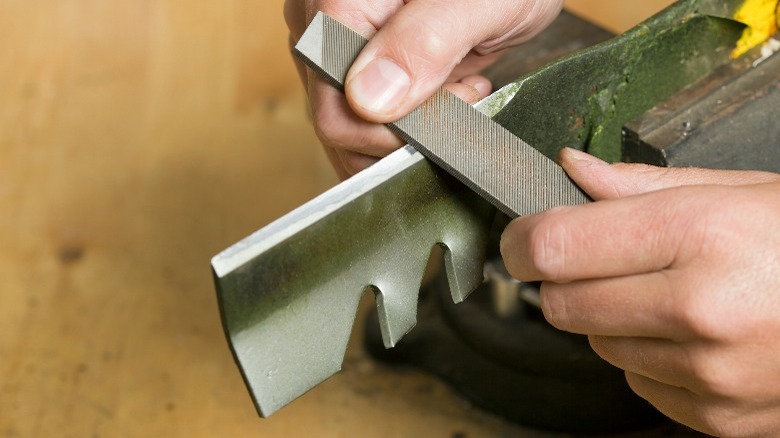Something you might be aware of is whether or not you need to sharpen your lawn mower blades. However, this is something important to think about — after all, having mower blades that need to be sharpened can cause all sorts of problems with your lawn. There are several signs to look for that tell you it’s time to sharpen them, from uneven grass height to dents in the blades themselves. In addition, we’re going to explain something called the 1/3 rule, which will help you become a master mower in no time!
One common lawn mowing mistake is cutting the grass when it’s wet. Doing so will have a tendency to bog down your mower. You also want to make sure you change up the pattern you mow, so you’re not always cutting the same path. Otherwise, the blades will start to grow in the direction that you cut them instead of growing upright. Also, don’t stick to a rigid schedule of mowing. Leave some flexibility and remember the grass will grow at different rates depending on many factors. Your lawn is a huge part of your home’s curb appeal, and keeping it nicely manicured makes your home look more inviting and keeps your neighbors happy, too.
The signs to look for

The good news is, there are lots of signs to look for that will tell you it’s time to sharpen the blades on your lawn mower. For example, if you mow your grass and the blades aren’t the same height. Try tightening the blades and making sure they’re aligned properly first, but if that doesn’t solve it, they’re probably dull. Other signs are having to go over the same spot more than normal, having to push harder, or if it takes longer to mow than usual.
As a general rule of thumb, you should sharpen the blades on your mower after every 20 to 25 hours of use. Regularly inspect the blades, and if you notice jagged tips, that could mean the mower isn’t so much cutting the grass as tearing it out. Check for any dents or bends, in which case the blades will need to be either sharpened or replaced. Notice frequent stalling, particularly in thicker areas of grass. If the blades are dull, the mower gets overworked and can stall. Additionally, if the mower starts pulling up clumps of dirt and grass, the blades are definitely damaged in some way.
The 1/3 rule for mowing
When it comes to mowing your lawn, there’s something called the 1/3 rule. If you follow it, it should help you avoid the common mistake of scalping your lawn by cutting it too short. Cutting the grass too close can cause all sorts of problems, mainly because it results in stunted root development. This can cause weed infestation, disease, traffic injury, and heat and drought damage.
To avoid these potential problems, always only cut no more than 1/3 of the total grass blade length at a time. It’s better to mow more often and take less off at a time. The recommended height for warm-season grass is between two and two and a half inches tall, whereas the recommended height of cool-season grass is between three and four inches tall. Cutting off too much height removes the surface of the grass, which is where photosynthesis occurs. When there’s not enough leaf surface, the grass uses up its stored nutrients and the root system weakens. Avoid all this potential damage by remembering the ⅓ rule.